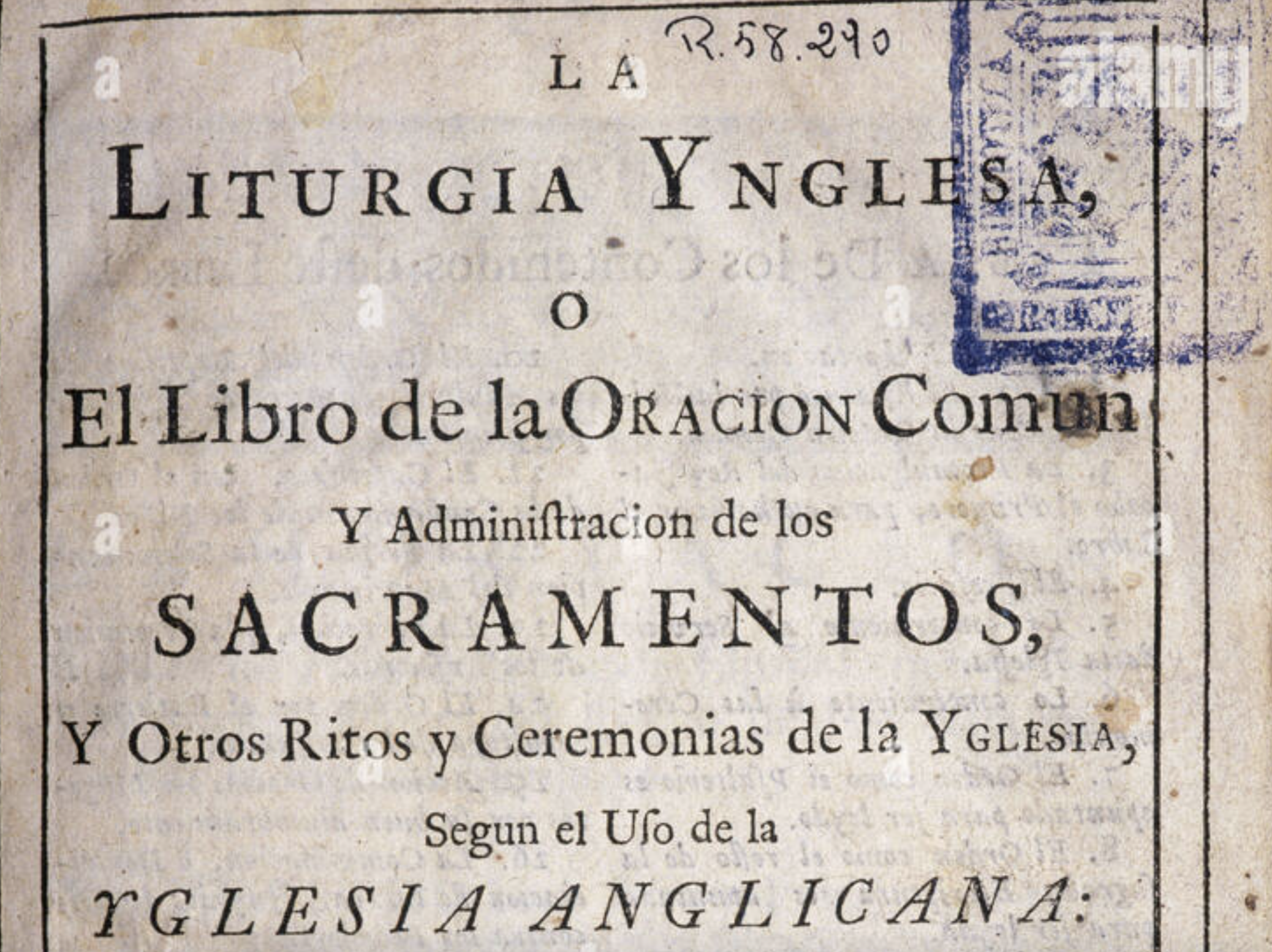The earliest versions of the Anglican Prayerbook existed in French, German, Latin, and Spanish during the 16th and 17th centuries.
The “English” of the prayer book is an important part of its legacy – in that it provides the prayers and Scripture in the common vernacular tongue that could be understood by the people. It also represents the return to a Pre-Norman conquest identity. To pray in English not only throws off the Pope and Romanism, but also centuries of French dominance over English Christianity. It was the eleventh century invasion of William the Conquerer that cemented the Latinization of the English Church, language, and government. As can be most easily evidenced in the linguistic development of English itself post-Norman occupation.
Catherine of Aragon: The Spanish Queen of England
Yet the Spanish prayerbook remains an important historical connection to the Reformation in England. The Spanish version of the Book of Common Prayer is called the “Libro de Oracíon Comun” and has a long pedigree within the translation world. We shouldn’t be surprised such a book would come to exist as Henry VIII was married to the Spanish–born princess, Catherine of Aragon. Catherine’s betrothal formed part of the Spanish royal family’s plan for an alliance with England (see the Treaty of Medina del Campo). There’s also the Tudor to Hapsburg connection via her nephew Emperor Charles V. Spain was a great and influential empire, widely admired as a nation with power. They were connected to the Church’s most power prelates and also the Holy Roman Empire. Via Columbus the Spanish were spreading their empire into the new world and had recently conquered the Muslim kingdom of Granada. Communicating the Reformation theology of the prayerbook into Spanish would be an inevitable step in Anglo-Iberian relations.
The First Spanish Translation of the Book of Common Prayer
The Book of Common Prayer was first translated into Spanish in 1623, in order to help along the proposed marriage of Prince Charles (later Charles I) and Princess Maria of Spain (Infanta Maria Anna). Maria did not want to marry a Protestant and John Williams (1582-1650), Archbishop of York, learned Spanish in ten weeks in order to prove that the English Reformation and its worship was still compatible with the historic (pre-Roman) Catholic faith.
“He was anxious to let the Spaniards see the character of English worship…”
Muss-Arnolt, Book of Common Prayer among the Nations of the World: “
“This was very seasonably done; for till that time the Spaniards had been made to believe by their priests and Jesuits that when the English had cast off the Pope they had cast off all religion also”
Lathbury, History of the Book of Common Prayer, 1858 (link)
He directed the translation which was completed by a former Dominican monk from Spain named John Ferdinando Taxeda. However, the marriage between Charles and Maria never happened neither side was willing to convert to marry – despite the linguistic attempts at persuasion. Charles later married the French catholic Henrietta Maria.
Later Spanish Versions of the Book of Common Prayer
The first translation of the 1662 edition of the Book of Common Prayer was made in 1707. The translator, Don Felix Antonio de Alvarado, was a convert from Roman Catholicism and made a priest of the Church of England to minister to a congregation of Spanish merchants in London. The translation was apparently made for the use of his congregation. According to Professor Boehmer, it is merely a revised and enlarged edition of Texeda’s version.

Leave a ReplyCancel reply